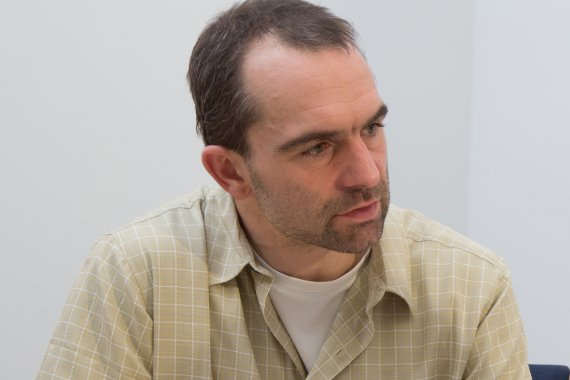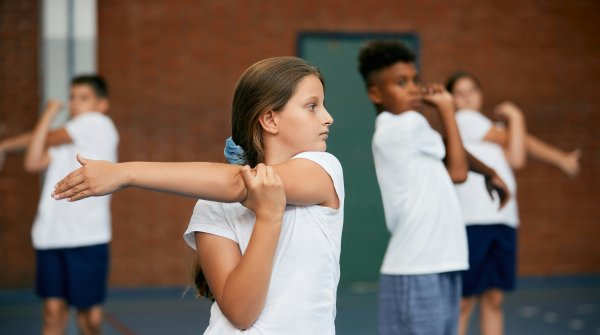
ISPO.com: When should athletes start to prepare for the restart after an injury?
Heiko Ziemeinz: First of all, it is nice when, for example, after a ligament injury in the knee, the diagnosis is so clear that the therapy plan and rehab have been determined. Then you can estimate when you can start playing sports again, if no complications occur. In consultation with coaches, physiotherapists and doctors, you set yourself certain goals for rehabilitation. Then there is light at the end of the tunnel. This makes it easier to maintain motivation in order to prepare consistently for the comeback. It also requires that you feel it is worthwhile. A 38-year-old district league footballer will think about the effort he has to make after a serious injury. You should ask yourself about the emotional value the sport has for you: Is it good for me? Do I feel joy? Then you can make the decision: Do I go through the effort or not?
What if the diagnosis is not so clear and the light at the end of the tunnel is missing for the time being?
Are there strategies to motivate yourself over a longer period of time?
Yes, in motivational psychology you first define day X, when you are "ready to play" again, as they say in football. Then you fill the entire period with intermediate goals. The objectives should be set according to the "SMART" rule. That means first of all that the goal must be specific - for example, after a torn cruciate ligament, I would like to be able to bend my knee again by a certain amount of degrees on a certain date. Secondly, the target should be measurable, in our example this would be the angle of knee flexion. Thirdly, the target must be adjustable - something can always come up, for example an infection. Fourthly, the target must be realistic. After a torn cruciate ligament, for example, you cannot play football again after three months. And finally, it must be scheduled. So you need precisely defined periods of time until you have reached certain stages.

What other methods are there besides SMART?
Many athletes illustrate the path to their return by recording a "Road to Comeback". The various intermediate goals and how to reach them can be the subject of visualization sessions until the actual comeback is demonstrated. Football players then imagine, for example, how they are replaced for the first time and play the first few minutes. This is very engaging for the athletes.
What happens then on Day X?
It is good to visualize these situations weeks in advance. You can also imagine certain inner dialogues which you will then say to yourself, for example: "Stay calm" or "Go into the first duel as if nothing had ever happened". If you play through things again and again beforehand and design the visualization in such a way that it is positive what is happening - then you are well prepared.
How do you deal with the fear of a new injury?
It goes in the same direction. You should always imagine that things are going well. Also you should counter-condition and in the moment of the injury you should put on another pattern that covers the original picture. You can also regain confidence through appropriate exercises in training.
How does frequently injured athletes like Arjen Robben or Marco Reus help to fight their way back again and again?
I do not know their exact strategies, but they seem to be successful. They always manage to come back even after serious injury. Playing soccer seems to be so valuable to them that they have developed strategies for themselves to struggle through the rehabilitation process again and again. Over time, however, they have also gained experience that their strategies work well. At their first injury, the uncertainty among the athletes is often much greater.
What would you advise a shopkeeper to do after the corona crisis?
In the end, the considerations are the same: is it worth the restart? Is it economically sensible? Is it really important to me? Or had I also considered giving up the business before? If you decide to make a new start, you should make plans and develop goals like an athlete - despite all the uncertainty that exists at the moment. In fact there is no other way than to make plans, set goals and after these intermediate stages decide in which direction to go.
- ISPO awards
- Mountain sports
- Bike
- Design
- Retail
- Fitness
- Health
- ISPO Job Market
- ISPO Munich
- ISPO Shanghai
- Running
- Brands
- Sustainability
- Olympia
- OutDoor
- Promotion
- Sports Business
- ISPO Textrends
- Triathlon
- Water sports
- Winter sports
- eSports
- SportsTech
- OutDoor by ISPO
- Heroes
- Transformation
- Sport Fashion
- Urban Culture
- Challenges of a CEO
- Trade fairs
- Sports
- Find the Balance
- Product reviews
- Newsletter Exclusive Area
- Magazine







